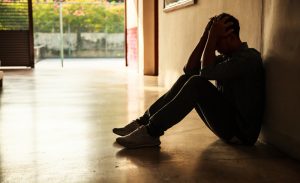
Alcohol and drug use in the LGBTQ+ population is very common
Drug use that is considered “far out” by others is often normalized in this community.
As a gay man, I am often asked to do interventions for gay and lesbian individuals. I have lived the exciting lifestyle of a young gay male in New York City and vacationed all the queer hotspots in Miami, Fire Island, Provincetown, Mykonos, and the Hamptons. During an intervention I can quickly connect with an LBTQ person.
Drug use is part of LGBTQ culture
Drug use is very normalized in the gay community. People don’t bat an eye when they see others using substances. According to the Substance Abuse and Mental Health Services Administration, roughly 20 to 30% of the LGBTQ+ community abuse substances. This is compared to 9% percent of the total population.
For members of the LGBTQ+ community, substance use can begin at a young age. Typically to escape anxiety about coming out in a conservative culture. As they develop into adulthood, social interaction tends to revolve around partying. Substance use can serve as glue for numerous social networks.
Are testosterone and steroids gay party drugs?
To complicate interventions on LGBTQ individuals, it is common that they use multiple drugs. Gay men often use testosterone or steroids to build a muscular body. Cocaine and alcohol abuse go hand in-hand. Men that use crystal meth often supplement the high with Adderall and GHB (G. To “come down” they use Benzos, such as Xanax to sleep.
As a member of the gay community, I have been able to quickly build trusting relationships as I often share commonalities with the person of concern, such as experiences, perspectives, or general knowledge. Like most of them, I have used substances to suppress feelings of shame and kept secrets about who I was, but I’ve recovered and want to encourage them to do the same.
LGBTQ interventions do exist
Conducting successful interventions with LGBTQ+ individuals requires personal experience with the community. While the interventionist doesn’t need to be gay, they must be empathetic to the sensitive issues surrounding our identities.
When doing an intervention for a person in the LGBTQ+ community, our most significant concern is where to place them in rehab. For the best results, they need to be in an inclusive rehabilitation center.
I asses the client population in a treatment center and ensure your person of concern will not feel isolated. In our research, we have found excellent treatment programs that support LGBTQ+ individuals, some of which treat them specifically.
LGBTQ people are at risk for addiction
If a person does not live in a liberal area I often suggest that they travel to facilities outside of their state.
Currently, almost all major cities have support groups for LGBTQ+ individuals recovering from addiction. One of the largest forces behind long-term recovery is a community that comes together to help them rebuild; 12-step meetings are a great place to start and most cities have gay (or gay friendly) AA meetings.
Find a local AA meeting or ask a friend for help
A fantastic resource to find these support groups is GayandSober.org, which provides an extensive list of LGBTQ+ meetings available across the globe. Many LGBTQ+-friendly resource centers host recovery meetings in their facilities as well. Vibrant, gay communities, like New York City, Austin, Chicago, Denver, Fire Island, Providence Town, the Hamptons, and Sag Harbor, are also great locations with numerous AA meetings.
The staff at Adam Banks Recovery have hands on experience with the LGBTQ+ community, as members or allies. I participate in sensitivity training to ensure that we are well-equipped to support our clients through all parts of their recovery journey.
An important article about doing interventions on men that use Crystal Meth, can be found here.
About Adam Banks
Adam Banks is a certified interventionist and the owner of Adam Banks Recovery. After receiving an MBA from the University of Chicago, Adam built a company acquired by United Health Care. His discipline and attention to detail comes from his former career as an airline pilot, holding an ATP, the FAA’s highest license.
Today, Adam is dedicated to helping others achieve long-term sobriety. His work has guided executives, pilots, and physicians on paths to recovery. Adam brings families together through a loving and inclusive approach.
Adam has authored four books on addiction. His recent work, Navigating Recovery Ground School: 12 Lessons to Help Families Navigate Recovery, educates families on the entire intervention process. He also offers a free video course for families considering an intervention for a loved one.
Adam is available for alcohol and drug intervention services in New York, Long Island, the Hamptons as well as nationally and internationally.




